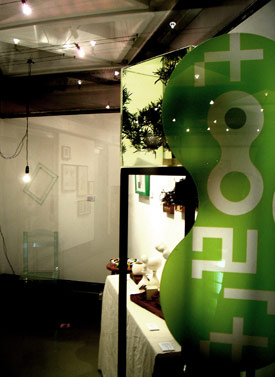 |
|
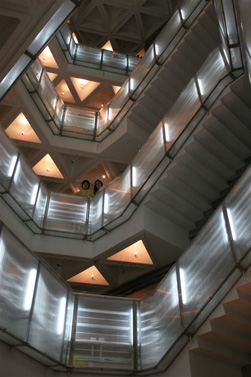 |
|
「二樓原作」的創立,或多或少是標緻著香港本土藝術的一場戰役正要展開。面對的問題是公眾的,如何使這間最能忠實展示香港當代藝術的畫廊得到更多支持?如何使大眾明白藝術品的收藏價值?為什麼要支持本地藝術?要解答這些問題給大眾明白是困難而且需要時間,「二樓原作」也堅持了兩年。 |
The birth of Too Art is perhaps a milestone which marks the beginning of a battle in the Hong Kong art scene. The biggest challenge that it is facing is about the public – how can a gallery which truly reveals Hong Kong’s contemporary art gain wider supports? How can it raise public awareness about the value of art collection? Why is it necessary to support local art? To give answers to these questions is by no means an easy task and it does require time to arrive at solutions. Too Art has been constantly reflecting upon these questions over the past two years since its opening. Stepping into the third year, Too Art is infused with new energy. Its management has been taken up by a younger generation. At the same time, its exhibition space has expanded from just a corner to the whole floor. Adding onto the list of some established artists, Too Art is also aiming to promote other young and emerging artists who have developed some mature concepts in their art making. All the art pieces created by these artists are experimental and yet carry great potentials which make them become fine collector’s items. As Too Art has always valued and put emphasis on artists’ continual art making, each piece of art work selected would carry significant value of this continual process. Reciprocally, we hope that art collectors would appreciate and treasure every single stage in the development of art creation by local artists. As to the future, your supports will still be essential towards the development of Too Art. We will continue to work towards becoming the leading gallery for Hong Kong contemporary artists as well as providing a top quality investment platform for art collectors at the same time. Yu Kei Kei Too Art Text translated by Livia B. Garcia March 2007 |
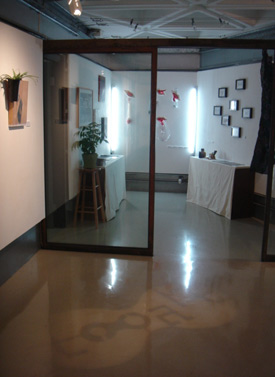 |
| 一切從一件好事開始 - 度身訂造的實驗計劃「二樓原作」 | ||
香港自九七金融風暴後,經濟滑落,政府力求轉型良方,罕有地把藝術、創意列入施政報告內,欲向英倫借鏡發展創意工業,改善經濟,意圖救港。可惜國際藝術大都會只是空談,缺乏長遠政策和發展方向。在種種的缺陷下,民間主導的藝術性工作是勢在必行的。 |
近年雖然湧現各種不同的藝術空間或展覽場域,為藝術家的作品提供了展覽的機會,但這些展覽不免局限於策展人個人口味,或套用了明星式的硬銷手法,製造藝術巨星。一些缺乏人事關係或較低調的藝術家,自然難被發掘,發展機會較低。曾經出現這樣的情況︰我在大小不同的幾個展覽場內同時間見到同一位藝術家的作品。我有點質疑這種培養藝術家和發展藝術的態度。我深信藝術的培養和發展是長線的,並非短暫速成的。 我一直在想︰「怎樣才能使藝術家的創作生涯得以延續呢?」在藝術創作與生活兩者之間是否需要一個中介角色來串連起來,使一切更理想呢? 商業畫廊是藝術家與社會的橋樑,透過畫廊售出作品,藝術家能賴以為生,創作生涯才得以延續,畫廊在這方面實在?任重要的角色。據了解,香港商業畫廊近年不斷增多,但大部份畫廊以售賣中國內地、亞洲及越南等地的油畫為主,部份則是推廣外國藝術家或兼一、二本地藝術家的商業畫廊。以打響旗號推動本地當代藝術的畫廊,真如鳳毛鱗角;而附屬於這些畫廊的本地藝術家亦屈指可數。畫廊多數以商業角度為主要營運方針,選取他們認為適合的藝術作品,個別作主力推廣。大部份畫廊市場策略亦較保守,售賣作品類型狹窄,相信從事錄像創作和裝置的藝術家對這點有更深切的體會。他們對新晉藝術家和某些創作媒介的藝術承擔較少,提供機會亦不足。香港畫廊所扮演的中介角色未能完全推動本地藝術、更不能廣泛地協助藝術家的發展。 |
再細想,這又不完全是商業畫廊的責任。在商言商,沒有人願意做虧本的生意。我相信香港缺乏收藏本地藝術的風氣和香港一向不重視藝術不無關係,香港的專業藝術家不多,收藏和買賣的渠道亦缺乏,香港收藏家以居於香港的外國人為大多數,而收藏本地作品的比率較低,促使居港的收藏家對本地藝術價值缺乏信心。而本地收藏家則偏重收藏古董、藝術品;收藏當代藝術則是九牛一毛,本地藝術館亦不例外。曾到過澳洲的阿德雷特走訪當地的商業畫廊,畫廊所展示的作品九成以上是本地藝術家的作品。一位畫廊主人的一席話使我非常感慨,他說:「從前我售賣世界各地的藝術品,可惜門堪羅雀,澳洲居民對本地藝術極度支持,因此被迫改變營運方針,才能生存至今。」我苦笑答道:「香港的情況卻正正相反。」我深信藝術收藏直接影響藝術的發展,培養收藏本地藝術的風氣是重要的工作。 「 吹水」往往是藝術創作者的溝通途徑和討論問題的方式之一。在這無動機、不刻意的談話中、卻反映到藝術創作者潛在內心熱切的渴求;渴求一個填補上述不足的中介角色。「二樓原作」是柴灣開放工作室 「開閘」的原班人馬,為這個中介角色度身訂造的另一項實驗計劃,希望在藝圈發展上多一點可能性。「二樓原作」是介乎藝術空間與商業畫廊之間的場域,並沒有接受政府或商業機構的任何資助,一切自負盈虧,參與的所有工作者皆以義務形式協助籌劃及行政事宜。畫廊獨立自主既富彈性;也接受實驗性或概念性的作品。計劃以兩方面進行:(一)以推動本地藝術家的原創原作,協助藝術家延續創作生涯(二)培養及鼓勵收藏本地藝術的風氣。計劃得到香港藝術中心總監茹國烈先生及同事們的支持下,二零零四年十二月十日,正式掀起了序幕。「二樓原作」嘗試 以香港從未有的特殊模式運作 –「策展式畫廊」,畫廊展售以策展主題的形式推出,讓藝術家堅持自己的發展路向和風格,無需迎合畫廊的需求創作作品。每次展覽以群體組合形式展售約二三十個藝術家的原創作品;只要作品完整而配合主題、大多數作品也接受展售。在快過去的一年,曾分別以不同主題、不同構想展售作品。曾?與的藝術家約一百人,展售作品超過二百多件。 |
畫廊的宗旨不只是為小眾服務,它是一個廣泛又公開的場域;更拒絕小圈子運作。藝術家可以自薦作品,或畫廊負責人四出搜羅適合主題的作品,因此搜羅的作品來自不同學院、不同背景、不同資歷。讓作品在同一主題下呈現,既可為更多藝術家帶來展售的機會,在作品層面上亦可更廣闊、不分媒體、面貌更多元化。在一次邀求作品時,有一位我很敬佩又資深的藝術家對我說:「圈內只會對新人關注和推廣,對一些不斷努力而低調的藝術家已遺忘,我們的機會不及新人了。」她的說話常提醒我畫廊的公開性和廣泛性的重要。 藝術品以寄賣的形式展售,而畫廊兼負責行政、宣傳開支等一切事宜。藝術家只需專注創作,無需兼負行政及擔心開支的問題。在每次展覽中,藝術家雖然展出作品件數不多,但畫廊同時附設一個小型藝術家資料庫,讓展售的藝術家擺放個人資料夾,收藏者或觀者可透過資料夾進一步了解藝術家的展品以外的作品,畫廊更會為他們推介更適合的藝術家及其作品。希望藝術家有更多發展機會。在推廣收藏風氣方面: 「二樓原作」致力拉近觀者與商業畫廊之距離,普羅大眾一般認為藝術是「高檔」玩意,商業畫廊是不能踏足的禁地。「二樓原作」所屬的位置其實是藝術中心二樓的公共走廊,以一扇玻璃門及數塊白板勾畫了畫廊的外廓,地方雖小,卻五臟俱存。吊詭地畫廊介乎公開展場與私人畫廊矛盾之中可共存的特殊元素,這特殊的地利打破了一般人對?觀商業畫廊卻步的想法。連觀者亦不自覺地走進了畫廊去欣賞藝術品,突破畫廊與普眾的距離,成功踏出了購買藝術品的第一步。 香港收藏風氣並未成熟,能使普眾踏出收藏的一步並不容易。高價的作品,他們未有信心,亦質疑其保值性,對作品的藝術性與價格沒有概念。一般以購買精品的心態來衡量作品,所以願意付出的價錢與作品的價格有一定的距離。因此作品以合理的價格售賣,讓愛好者可以負擔得來的價錢建立收藏藝術品的嗜好,為本地藝術營造慣性消費以外的另類選擇,讓藝術融入他們生活當中,提高生活品味,讓更多人認識本地原創藝術之餘,培養收藏風氣。風氣得以建立,藝術家的創作生涯才得以延續。 |
普羅大眾對當代藝術的認識和接受有限,注重個別交流和推介很重要。畫廊以輕鬆的交談來推介作品,讓觀者了解藝術家的背景和作品理念;了解多了,收藏的意慾自然提高,出售機會也較大,相信這是鼓勵收藏有效的方法。畫廊很多件作品也是這樣成功售出的。 「二樓原作」過去一年以靈活策略應付需要,不斷作出修改。實戰的經驗讓我們了解到藝術與普羅大眾之微妙溝通關係,主題的內容對售出作品有關鍵性的影響。 以「童玩童心」玩具與遊戲主題為例,主題貼合每個人成長的經歷及回憶,令觀者容易產生共鳴,特別有親切感。該次展覽較受歡迎,參加觀者多,而大多數買家亦是本地收藏者。在作品旁附設小小的提要,讓觀者閱讀,是把觀者和作品拉近的方法之一。作為一個畫廊的負責人,要保持作品質素之餘,在銷售方面來一個平衡和取捨,那畫廊就從裝裱、擺放和展示時花點功夫,作一些技巧性的調整,突出作品的重要性,使每次展覽如同打開一本圖文並茂集多元作品於一身的購物指南,讓不同的收藏者細味和思考,去選取心儀的作品。由於一般香港家庭空間較少,較大呎吋的作品較難售出,尤其是掛牆的平面作品,故此畫廊在不影響展售的原則下亦會展售立體小件、工藝性?和精緻的作品。「二樓原作」知名度低,故此有些藝術家拒絕擺放作品。但每當遇上一些對本地藝術圈缺乏了解和聯繫,對發展機會摸不著頭腦、不知從何入手的藝術家拿?個人作品和創作履歷自薦,尋找展售的機會,看著他們積極的態度、對藝術的熱誠和勇氣都令我非常感動。「二樓原作」樂意成為他們的踏腳石。從純商業角度而言「二樓原作」尚未算成功。作品的售賣未能解決藝術家的生計。但悲觀並不完全,而事實上近一年的工作中,藝術家除了得到實質的回報外,亦為他們帶來了一定的發展的機會,給予他們精神的支持鼓勵及對藝術的盼望。我們了解到現今香港售賣及收藏本地藝術的普及風氣雖然困難重重,並非藝術家和單一畫廊的工作可成就之事,這一切有待努力發展,而且非常困難。重要的是我們的實驗證明了藝術家和收藏家也需要更多同類型的平台,讓彼此互相發展。 |
香港若要發展一個建全的藝術生態,藝術、生活和消費文化的建立、藝術家的培養、收藏本地藝術的風氣的提升和扮演中介角色的畫廊實有著密不可分的關係。只要有建全的藝術生態,本地藝術才得以推廣和發展。空談「國際藝術之都」幫不了香港的創意工業,幫不了香港的經濟、更幫不了香港的藝術發展。一位有名的建築師在他的演講中曾說過一番話,令我非常鼓舞。他說:「香港有很好的藝術品值得我們收藏,而且超值,本地藝術唯有大眾的支持才能發展。」 「二樓原作」本著從一件好事開始,希望在可見將來有更多同類型的買賣平台出現於不同的空間,讓本地藝術發展得更全面、更廣泛,並邁向更美好的藝術領域。
李美娟 |
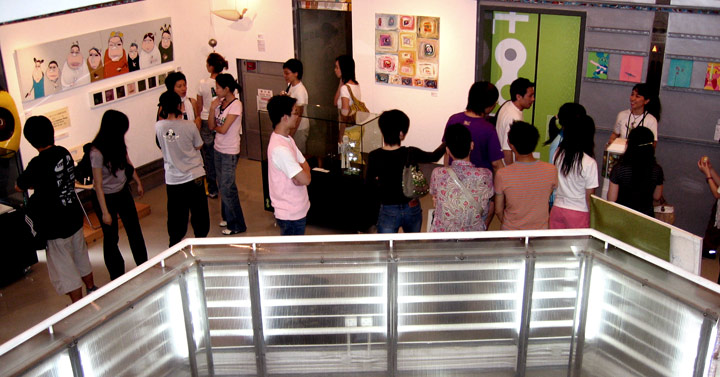 |
| A Good Deed Makes a Start "Too Art": A Tailor-made Experimental Project - Carol Lee | Translator: Lim King Na | |
The Hong Kong economy has been going downhill since the 1997 financial crisis. To revitalize the economy, the government has unprecedentedly included the art and creative industry in its Policy Address. It is hoped that borrowing England’s experience in developing an art hub could save Hong Kong from the economic crisis. Unfortunately, without an adequate long-term policy and a clear developmental direction, the plan to build an international art metropolis is nothing but an empty word. In face of such failings, NGO-led art events appear to be all the more important. The local art circle has undergone lots of changes in recent years. The establishment of The Art School of Hong Kong Arts Centre (which the name has been changed to Hong Kong Art School) in 2000 has played an important role in providing more comprehensive courses for artistic talents. As different institutes have also offered a variety of art/creative courses, the number of people joining the industry has increased drastically, thereby creating a certain momentum in the formerly quiet art circle. With the changes in government policies, artists have become more active. Led by local artists, different art groups have emerged one after the other in the past few years, such as those in Oil Street, Cattle Depot, Chai Wan, Fo Tan, Kwun Tong and Fu Tak House. The Shek Kip Mei Factory Estate Project and the Green House Project, which have been under much media spotlight recently, witness the efforts of NGOs to promote the creative industry and local art, and their development of art spaces. Lately, the“West Kowloon Effect” has also generated heated debates in the media. Never before have so many people in this city been so concerned about cultural development. How promising the future seems!? Yet, are these really healthy signs or just a replay of the seemingly flourishing art scene before the 1997 handover? After a passing whim, would everything return to their previous silence? Some people believe that the situation has improved as new talents from various institutes suffice to spice up the art circle and lay down a solid foundation for future artistic development. Propaganda by the art field itself also seems to have increased artists’ opportunities to publish and exhibit their works. Yet, as an artist and art student, I deem that the day for achieving a healthy development of local art is still far ahead. |
Although the number of art talents has increased year by year, the turn-over rate is yet high for the market fails to absorb these talents, and very few of them could manage to become professional artists. Most of my classmates have to take up part-time or feeelance jobs because they cannot make a decent living by their artistic profession. Even for those who meant to work full-time to support their artistic creation have to give up their dreams and talent eventually in face of the cruel reality. For one to devote his life to art, the reward is way below the value of his education and talent. To say “sacrificing for art” is not a joke at all. Not only is our career prospect gloomy, our professional status is also often challenged. Although different art zones and exhibition sites emerged in recent years have offered artists more opportunities to exhibit their works, the exhibitions are prone to be dictated by curators’ personal interests. Some of the curators even hard sell artists as if they were superstars. Artists lacking a good social network or with a low profile tend to be poorly recognized, and thus are less competitive. I remember once I saw the artworks of the same artist in several exhibitions about the same time. This way of training artists and promoting their art is indeed questionable. To me, artistic creation is a long-term project, not an instant rendition. Even if the artists have the opportunities to exhibit, they are burdened by administrative works including promotion, material production, transportation and preparation of printed materials, apart from being having to devote themselves to their own artistic creation. A good friend of mine was once offered an opportunity to exhibit his works in a grand local art competition. Yet without any financial support from the organization, he could not afford to pay the trantsportation fee and consequently lost the golden opportunity of exhibiting his works. The public, too, lost an opportunity to appreciate his art. |
I have always asked myself this question: “By what means could the artistic life of an artist be sustained?” Would the situation be improved if an intermediary is there to connect art with living? Nevertheless, the blame should not be laid entirely at the galleries’ doors. From a commercial perspective, no gallery would like to run a business with loss. The difficulty may perhaps be partly attributable to the lack of collectors and concern for art in Hong Kong. There are few professional artists in Hong Kong, and there are also inadequate channels for selling and buying. Most of the local buyers are expatriates, and they collect but a small number of local artworks, resulting in a lack of confidence of other local collectors in the value of works by native artists. Local collectors and art museums seldom collect contemporary artworks but antiques. I once went to Adelaide to visit the local commercial galleries there, and found out that over 90 % of the works they |
represented were by local artists. I was saddened to hear what one gallery owner had said to me, “I previously sold artworks from around the world, but there was hardly a market for them. As the Australians are extremely supportive of natve art, I have therefore changed my running strategy to sustain my business.” “The situation in Hong Kong is exactly the opposite”, I replied with a bitter smile. I strongly believe that art collection help foster art development, and to promote a climate of collecting local art is of vital importance. Casual chatting and bantering among artists is one of their common ways for communication and addressing problems. In such conversations, which are void of any special motive or deliberation, tend to disclose a strong desire deep inside their hearts, that is, the longing for an effective intermediary. “Too Art” is another tentative project by the original cast of “Kah Zha” of Chai Wan Open Studio, which aims at providing more possibilities for art development in the local art sphere. It positions itself somewhere between an art space and a commercial art gallery. It is self-financed and does not receive any sponsorship from the government or any commercial enterprises. All the participants are volunteers assisting in the areas of planning and administration. Being independent and flexible, the gallery welcomes tentative and conceptual artworks. Its project is conducted along two lines: (1) to promote original artistic creation of local artists and help them sustain their careers; (2) to encourage and cultivate an atmosphere of collecting local artworks. With the support of Louis Yu, the Executive Director of Hong Kong Arts Centre, as well as other colleagues of his, the project was officially inaugurated on 10th December, 2004. “Too Art”, which attempts to adopt a brand new mode of operation in Hong Kong, may be dubbed a “curatorial gallery”. The gallery only sells those artworks which have been shown in different thematic exhibitions it staged. This has the advantage of allowing the artists to pursue their own styles and developmental trajectories without having to cater to the demands of the gallery. |
Each time the gallery sells the original artworks of about twenty to thirty artists on a group basis. It accepts any artwork as long as it is intact and fits in with a particular theme of an exhibition. Almost a hundred artists have participated in the exhibitions held this year and over two hundred pieces of artworks have been offered for sale. The gallery is meant to be a realm for the general public and refuses to operate in a small circle. While artists can self-recommend their works to the gallery, the gallery owners themselves may also go out to look for suitable artworks for a certain thematic exhibition. The works included for exhibition may be by artists from different institutes or with different backgrounds and qualifications. In this way, artists can be gathered together under the same theme and be offered more chances to sell their works; meanwhile it also broadens the scope of an exhibition as a wide range of artworks is covered. One time when I asked an experienced artist, whom I highly respect, for her works, she made the following comments to me: “The art circle these days only promotes and cares about new artists; those who continue to work hard in a low profile are being forgotten.” Her complaint often reminds me of the importance for the gallery to remain open and broad-ranged in its selection of artworks. Artworks are sold in consignment at “Too Art” Gallery. As the gallery takes up all the administrative and promotional work, artists can then concentrate wholly on their artistic creation without the need to worry about shouldering the administrative work and expenditure. Although not many artworks are on show in each exhibition, there is a small archive in the gallery for the artists to display their personal folders, through which collectors or viewers can obtain a better overview of the works by individual artists. When necessary, the gallery may also recommend suitable artists and their works to the public. Hopefully by doing so artists would gain more opportunities for their artistic advancement. |
To promote art collecting, “Too Art” makes every effort to narrow the distance between viewers and commercial galleries. The public usually think that art is something high-brow, and consider commercial galleries as a holy land. “Too Art”, however, is just located in the corridor on the second floor of Hong Kong Arts Centre, which is delineated simply by a glass door and several white panels. It has anything you name it despite its small size. The gallery positions itself in an interesting space which enables a public exhibitional area and a private gallery to coexist, thus breaking the general notion of commercial galleries as a place to be kept away from. Instead people can now visit the gallery without much hesitation. It is a breakthrough in respect of connecting an art gallery with the public; it serves also as a successful step towards selling artworks. |
Since the general public has limited knowledge and scanty recognition of contemporary art, individual introduction and recommendation is therefore essential. The gallery introduces its artworks to viewers in a relaxing manner in order to let them understand more about the artists’ backgrounds and artistic concepts. The more they learn about the artists, the stronger would be their desire in collecting their works, hence the greater the possibility for the gallery to have them sold. This is an effective way of enhancing people’s interest in collecting. Indeed many artworks in the gallery are successfully sold in this fashion. Last year, “Too Art” was flexible and quick to make modifications to cope with the market demand. Experience has informed us of the subtle relationship in communication between art and the general public, and that the subject matter of an artwork is of paramountcy for its sale. The exhibition, “Toy’s Story”, is a case in point. Given the topic of toys and games is related to everyone’s experience and memories of growth, it could easily evoke a psychological resonance in the viewer. The exhibition turned out to be quite a success, attracting a large number of visitors, where most of the buyers were local collectors. In this exhibition, a brief explanatory note was placed by the side of each artwork to shorten the distance between the viewer and the artwork. As a gallery owner, I am responsible to maintain not only the quality of artworks, but also the balance and choice of artworks for sale. In order to highlight the distinctive features of each artwork, the gallery needs to spend some time on thinking over matters such as its mounting, decoration, display and other related technical details. It is hoped that when people come to see an exhibition, they would feel like reading a colorful shopping guide, and collectors could choose the pieces they like while browsing through the exhibits. Many families in Hong Kong live in small apartments and have difficulties in placing large-scale artworks at home, especially two-dimensional hanging pieces. For this reason, the gallery, under the condition of not violating its basic principles, also offers small, crafty and delicate art objects for sale. |
As “Too Art” is not that well-known, some artists have refused to display their artworks in it. Some artists with little knowledge and connections in the local art circle, though, have recommended their own works and profiles to the gallery. “Too Art” is happy to be their stepping-stone as I am moved by their positive attitudes, passions and bravity towards artistic creation. From a pure commercial perspective, “Too Art” is not yet successful since our artists cannot make a living by merely having their works sold here. We are, however, not pessimistic as the job we did last year has brought not only concrete remunerations, but also opportunities of development for the artists offering them support, encouragement and hope. We understand that there is still a long way to go for cultivating a climate of selling and collecting local art, and this is no easy task to be accomplished by artists alone or by any one single art gallery. The climate is pending to be developed and great hindrances are always there on the way. Nonetheless, the experiment undertaken by “Too Art” has proved to us that similar platforms are necessary for the mutual development of artists and collectors. A healthy growth of the art cycle in Hong Kong counts on three elements – to establish a consuming culture of art, to provide artists with chances for development, and to promote the trend of collecting local art. In this respect, art galleries have an important role to play as an intermediary. Local art could be developed and promoted only if a wholesome artistic environment is established. The sheer bragging about building an “International Art Hub” is no help to the development of the creative industry, economy and art in Hong Kong. A famous architect once made the following remark in his speech: “There are many excellent artworks in Hong Kong which are worth collecting, and at a good price”. To me, his words are encouraging. Indeed, it is only with the support of the masses that local art can be developed. |
“Too Art” is founded with a good primary motive. In the foreseeable future, we hope to see the emergence of more and more similar platforms of buying and selling in different spaces which help bring local art to an all-round development.
Carol Lee Carol Lee received her B.A (Fine Arts) from a course which is jointly organized by The RMIT University and Hong Kong Art School, and is now taking the M.F.A.(Fine Arts) course offered by the same institute. Carol was the coordinator of “Kah Zha” of Chai Wan Open Studio event, she is also one of the founding members of “Too Art”.
|
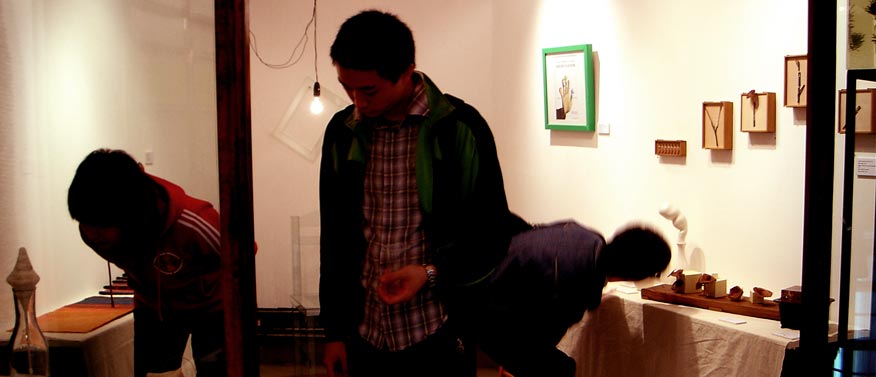 |